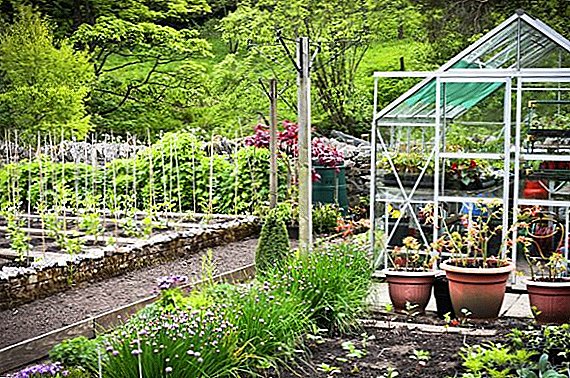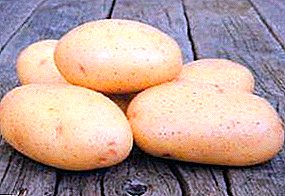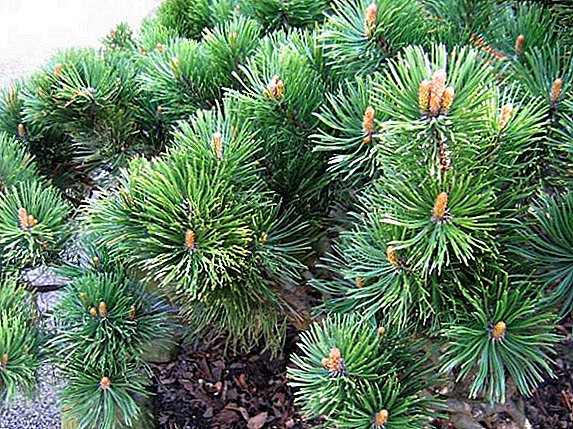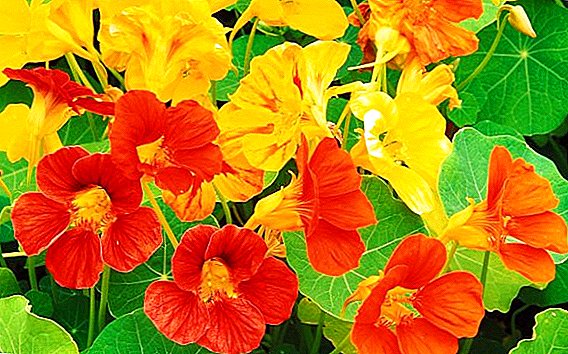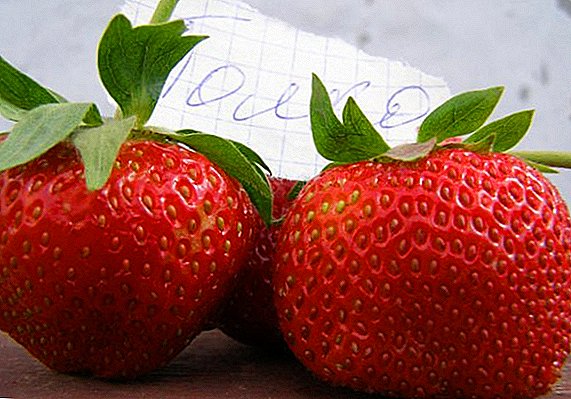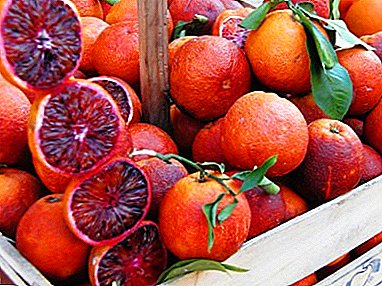
Red Sicilian orange refers to the rut family together with other representatives of the citrus species.
It is an evergreen tree with brilliant oval leaves and white fragrant flowers.
In nature, such a tree grows to 6 meters in height and can bloom several times a year, so that you can often see trees with flowers and fruits of the previous harvest at the same time.
Orange trees look very attractive, and many gardeners at least once thought about growing a miniature version at home.
Origin and scientific name
Group of hybrids, to which the Sicilian orange belongs, is called Citrus × sinensis, which in Latin means “Chinese citrus”. This hybrid of mandarin and pomelo originally from China has been cultivated in the Mediterranean since the 18th century.
It was on Italian soil that the fruit acquired its “bloody” color due to the characteristic temperature difference between the cold and warm season. Red oranges are also grown in some US states and South America.
Photo
Red Sicilian orange: photo of a plant with bloody fruits.



Home care
Immediately after purchase trees should evaluate the capacity and soil in which it is contained. If it is a thin plastic pot and / or pure peat, then it is worth transplanting an orange in more suitable conditions.
Temperature and lighting
Very orange demanding on temperature. Despite its southern origin, he does not like prolonged heat and can get burns from direct sunlight. The optimum temperature for flowering and fruit ovary is about 18 ° C. Frosts are also harmful, it is better not to leave the plant on the balcony when it falls below 4 ° C.
However, a room with central heating is also not the best choice for wintering Sicilian orange, it is better to move it to a cool place no warmer than 12 ° C. This will give the plant a rest and bear fruit again next year.
Like all citrus bloody orange loves bright places. Small plants feel good on the windowsill, the larger ones need a bright balcony or a winter garden. In winter, additional lighting may be required.
In the spring, when there is no threat of frost, you can take trees on the balcony or in the garden. Natural watering with rainwater not only washes away house dust, but also gives an impetus to the beginning of spring growth.
Watering and humidity
 Ideal humidity for orange trees - about 50%. Its decline, for example, in the heating season, leads to leaf fall.
Ideal humidity for orange trees - about 50%. Its decline, for example, in the heating season, leads to leaf fall.
Humidity can be increased by spraying, a container with water and gravel, or a humidifier.
Recently transplanted trees should be watered once or twice a week, keeping the soil moist but not wet. Well rooted plants can be watered once a week or two, depending on temperature and humidity.
Do not allow stagnation of water in the pot, it can cause rotting of the roots.
Bloom
Sicilian Orange usually blooms in May, but under suitable conditions may bloom several times a year. The flowering is usually very abundant, but only 1% of the flowers can become ovaries, which is much smaller than, for example, in Kumquat or Calamondin.
Like most citrus fruits, oranges self pollinated. High temperatures and dry air prevent fruit from tying, but you can try to help the tree by regularly spraying the flowers.
Fruit ripen quite slowly and completely acquire a characteristic color only by December. Differences night and day temperatures contribute to the ripening of fruits with a characteristic bloody color. If oranges are not removed, they will hang on the branches for several more months.
Crown formation
A beautiful shape of an orange tree can be achieved. pinching young shootswhen they grow 10-15 cm.
This stimulates the growth of branches in the middle of the tree and allows you to form a more dense crown. In February, before the beginning of active growth, you need to cut off the old, too long or dried branches.
It is better not to get involved in the removal of a large number of leaves - in them the plant stores nutrients for the formation of flowers and fruits.
Planting and transplanting
 Actively growing young trees are best replanted each year in February - March, before the start of active growth.
Actively growing young trees are best replanted each year in February - March, before the start of active growth.
Not worth it take a pot too deep to avoid root problems due to acidification of the soil.
Transplant should be carried out transshipment methodwithout freeing the roots from the ground.
The height of the pot must be chosen such that the root neck remains at the same level as before the transplant.
Mature trees are replanted every 2-3 years.
At home, it is better to limit the pot with a diameter of about 45 cm.
If the roots have already covered the whole earthen room, it should be taken out of the ground, cut a little and filled the gaps with fresh compost.
Within a month after transplant it is better to keep the tree in a shaded, cool place so as not to burden the weakened roots.
Ground Requirements
Sicilian orange prefers a primer in which moisture will not stagnate.
Young plants grow well in a mixture of turf and leaf earth, sand and humus in a ratio of 2: 1: 1: 1.
For an adult tree The same components are better taken in a 3: 1: 1: 1 ratio with a small addition of clay, which will give the earth a more lumpy structure.
Breeding
 Sicilian orange can be propagated seed or grafting.
Sicilian orange can be propagated seed or grafting.
Seeds of fresh fruit should be soaked overnight, and then dredged 1 cm into the soil for young plants or peat. Under the film, in a dark and warm place, the seeds will germinate in about a month. Dive seedlings need after the appearance of two leaves. You can learn more about how to grow an orange from a stone at home, how to plant, how to plant, how to care, here.
The orange tree from a seed grows very quickly, but you can wait for flowering from 7 to 12 years. And this is subject to cold winters with a suitable temperature of 10-15 ° C.
You can bring the appearance of flowers by grafting eyes or a piece of bark from a fruit-bearing plant, but even after that you will have to wait for the fruit for at least 3-5 years.
Fertilizer
Feed the orange tree need nitrogenous fertilizersammonium sulfate, for example. In the first year, the trimming should be carried out monthly, then - 4 times with an interval of 4 to 6 weeks during the growing season.
You can use special fertilizers for citrus.
Benefit and harm
One bloody orange contains daily dose of vitamin Cwith antioxidant properties, as well as potassium or magnesium, essential for healthy heart and blood vessels.
When used in moderation, red oranges help the body to resist colds, increase mood and stress resistance.
Caution should be taken to these fruits allergy sufferers, as well as anyone who suffers from gastritis, an ulcer or bowel disease.
A strong smell of flowers can cause exacerbation of pollinosis or asthma.
Diseases and pests
 The most common problem of orange trees is tendency to shed leaves, flowers and ovaries in any sudden change of environment.
The most common problem of orange trees is tendency to shed leaves, flowers and ovaries in any sudden change of environment.
This can be caused, in particular, by a lack of light, a sunburn or chemical burn, excessive or insufficient bearing of fertilizers, dry air, problems with irrigation.
Weakened due to too deep planting and stagnation of water orange tree can get sick with hommoses. A characteristic feature of this disease is dark red spots and cracks in the bark, from which gum flows. The diseased plant needs to be transplanted, and the affected areas - cleaned and sprinkled with antiseptic.
In conditions of constant dryness on the tree can settle pests: aphids, spider mites, scale insects. Modern insecticides help well from insects if applied according to the instructions.
Evergreen red Sicilian orange tree will decorate any apartment or winter garden, especially if you can achieve flowering.


